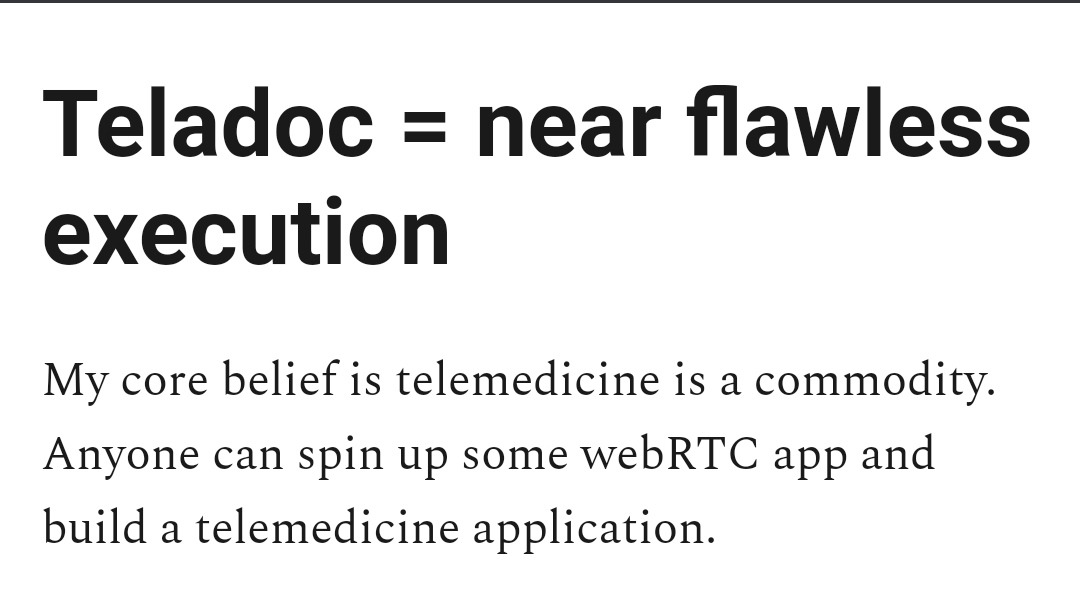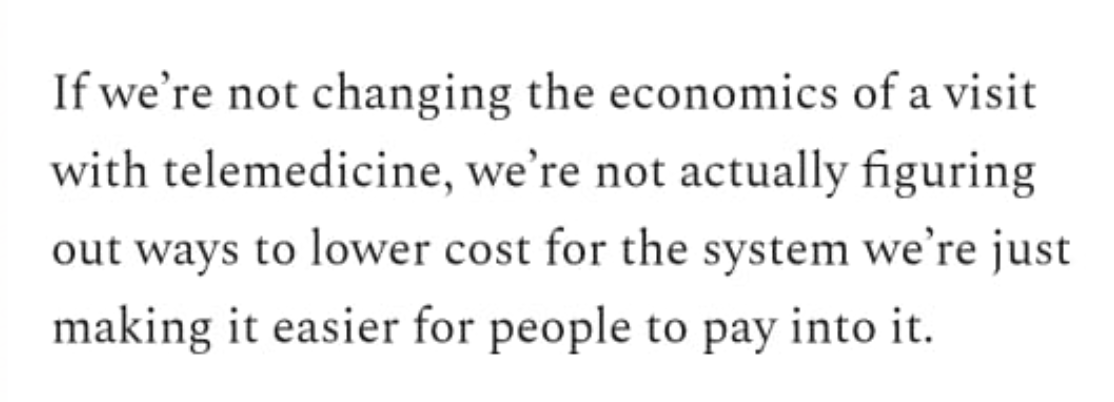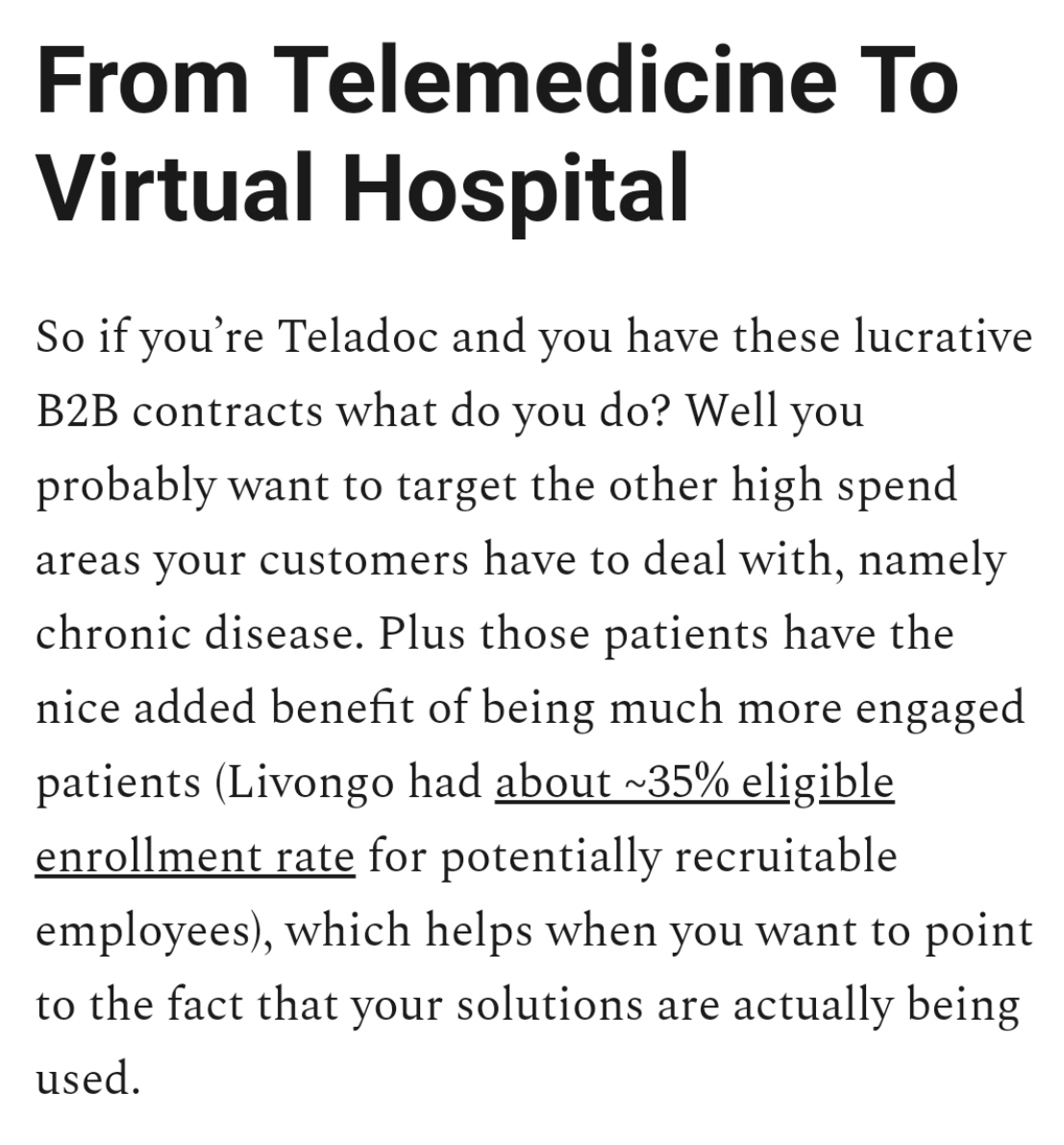Excellent analysis of the state of telemedicine in the US. Riffing off some of Nikhil& #39;s conclusions from an India perspective below. <thread>
Disclaimer: I& #39;m an investor and board member in @MFineCare, so obviously am not a disinterested observer. https://twitter.com/nikillinit/status/1293690742028808192">https://twitter.com/nikillini...
Disclaimer: I& #39;m an investor and board member in @MFineCare, so obviously am not a disinterested observer. https://twitter.com/nikillinit/status/1293690742028808192">https://twitter.com/nikillini...
Fully agree with Nikhil& #39;s view that telemedicine is a commodity. This is why so many companies were quickly able to "pivot to telehealth" in the past few months. At its heart it& #39;s just a platform for doctors and patients to communicate over text, voice and video.
In fact, you don& #39;t even need a webRTC app to compete in this space. The largest telehealth platform in India is Whatsapp. Every doctor who wants to consult remotely starts by giving her Whatsapp number to patients. And the experience for both sides is...not unsatisfactory.
If telemedicine is a commodity, the player with the largest distribution should win. If it& #39;s not Whatsapp, it will an offering from Amazon or Jio, or any of the hyper-funded startups that have invested in distribution ahead of products.
There& #39;s only one wrinkle. Whatsapp doesn& #39;t scale. Any doctor can do 5 daily consultations on Whatsapp, but hardly anyone can do 30. Same for any other generic video app.
There are two main reasons for this: clinical and economic.
There are two main reasons for this: clinical and economic.
1. Clinical
My neighbourhood grocery chettan takes orders on Whatsapp. But imagine if he needed to know which toothpaste I used 12 years ago, had to give me a signed bill every time and constantly needed to go back and look at my previous order. Healthcare is like that.
My neighbourhood grocery chettan takes orders on Whatsapp. But imagine if he needed to know which toothpaste I used 12 years ago, had to give me a signed bill every time and constantly needed to go back and look at my previous order. Healthcare is like that.
A clinician needs to not only communicate with the patient but to store her health record. The next time the patient comes in, he needs to know if she& #39;s diabetic and the course of treatment he prescribed her. He needs to write a prescription the pharmacy will honour.
If she requires further care, this record needs to go into the hospital& #39;s IT system.
You can& #39;t do any of this with a Whatsapp transcript, leave alone an ephemeral video call that vanishes as soon as it ends.
You can& #39;t do any of this with a Whatsapp transcript, leave alone an ephemeral video call that vanishes as soon as it ends.
None of this stuff is rocket science, or *shudder* AI. But it is painstaking, years-long work that requires domain expertise, integration with other players in the value chain and a product philosophy that keeps the dashboard clean but hides all this complexity under the hood.
2. The second challenge is economic. Nikhil nails it with this paragraph - telemedicine must change the economics of doctor visits.
In the US, the economics manifest themselves as high cost; in India, as limited capacity. The platform must break this economic barrier to scale.
In the US, the economics manifest themselves as high cost; in India, as limited capacity. The platform must break this economic barrier to scale.
Imagine you& #39;re doctor at an Apollo or Fortis. You don& #39;t really need telemedicine. Patients line up outside your clinic every day. Your limiting reagent is not patient demand but your own time. An app where you see the same number of patients online is at best a minor convenience.
What you need is an app that lets you see *more patients* in the same time. This doesn& #39;t just increase your earnings from consultation - it proportionately enhances your downstream earnings from surgery or long-term care. An app like that can change your life.
You can& #39; do that with Whatsapp. Because the app needs to be smart. It needs to take care of all your work that doesn& #39;t require clinical judgment - taking down medical history and symptoms, asking follow-up questions and recording responses, writing a prescription etc.
In fact, ideally it should help with your clinical judgment too - so instead of designing a course of treatment, you *choose* one. It should flag potential clinical errors that you will inevitably make. In short, not merely a communicator but an assistant.
This part indeed is rocket science. It requires "reading" millions of patient records, feeding them to the machine and getting top doctors to validate the output. It requires *shudder* machine learning.
But if it works, it completely changes the game. mFine has gathered 5 million unique health records from more than a million patients. Consequently, its doctors see 4 times more patients every hour than before. It removes the capacity bottleneck that Whatsapp can& #39;t begin to touch
Another economic insight in Nikhil& #39;s post is that tele-consultations are not enough. Almost all healthcare begins with a consultation, but they form a tiny part of the healthcare spend. Primary care is a lot of work for very little reward.
So any telehealth app needs to incorporate downstream healthcare where all the spends are. In India, it means three key areas: hospitalization, chronic care and preventive care. All of these require patient trust and a recognition of the app as the *healthcare provider*.
It requires a delicate balancing act between being a platform and a provider, and it& #39;s hard to imagine Whatsapp going in that direction. Zuck may want to run a lot of things, but it will be a while before he runs a virtual hospital.
To sum it up: telemedicine is easy on the surface - just a communication platform. 3 things make it hard though: domain expertise, economic disruption and vertical integration. This is why deep vertical products will win, not overnight pivots.

 Read on Twitter
Read on Twitter




